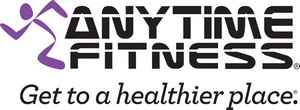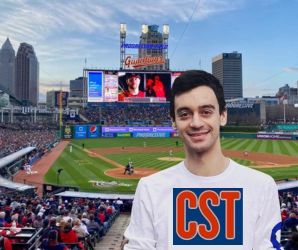As discussed in part one, knowing the signs and/or symptoms of head and neck cancer may just save your life. Not all cancers rear their ugly heads as symptoms, unfortunately many do not give any warning at all. When signs or symptoms show up, swiftly acting upon its early detection is key! Read on as we tell Brian’s exclusive story of early recognition……
Brian Sebastian Sr. has been exclusively sharing his head/neck cancer story with Nordonia Hills.News. Brian explains, “one day I woke up with common cold symptoms and some lymph nodes were swollen in my neck. On the right side, it felt more bulged out- the size of a walnut, and it felt firm but not painful. “When the lump wouldn’t go away I knew I had to get it looked at but life gets busy” …………….
With hockey season starting up for his son Brian Jr. that year, and the holidays coming up even faster, it seemed that scheduling physician appointments to get the lump checked was taking a back seat to his busy life (August 2019). For those who do not know, Brian is also the team photographer for Nordonia High School Varsity Hockey. Fast forward a handful of months and the COVID-19 pandemic shut everything down, creating even more challenges to scheduling and receiving health care. When he was able to see his physician in June 2020 she sent him for CT scan to follow up. The results were concerning and thus landed him at an Ear Nose and Throat (ENT) specialist who did a needle biopsy of the lymph node right away. They suctioned some fluid out of the lymph node and found dead squamous cells in it, which were not normal findings. A core biopsy was scheduled to remove more tissue for examination. Shortly thereafter, he received his Oropharyngeal Squamous Cell Carcinoma diagnosis, with HPV16 strain detected.
Brian was officially diagnosed with Oropharyngeal Squamous Cell Carcinoma, caused by Human Papilloma Virus (HPV p16 strain), one of the more virulent strains linked to oropharyngeal (mouth and throat) cancers, along with cervical cancers in females. It is the leading cause of cancer in males in their fifties. Brian wants others to know that there is a vaccination for HPV that they should take advantage of because the virus has absolutely zero signs or symptoms for years and years, (this is true for both males and females). Females have it detected
at their annual gynecological pap smears, as pre-cervical cancers are found, HPV is most often the culprit. HPV erupts into active status after often sitting dormant (if virus hasn’t been shed by body) for years. There are no tests for males to detect.
Even as Brian was sitting in the Seidman Cancer Center in downtown Cleveland, he still felt like he didn’t belong, especially being surrounded by so many people who appeared so sick. He didn’t feel sick at this point at all. His individualized treatment plan was drawn up September 15, 2020 over a year after he first discovered the lump in his neck. For the next seven weeks he would receive radiation five times per week, with thirty-five total, along with three double doses of chemotherapy (Cisplatin), and weekly labs for blood work. He had to undergo a full and complete dental exam including any scans or radiographs (x-rays) to ensure his teeth were healthy and strong enough to withstand radiation. Note: radiation and chemotherapy treatments cause dryness, sores, and sometimes pain in oral structures, including soft tissues of the throat.
For the first four weeks of radiation treatment Brian felt pretty good, but a few days after he had chemo treatments, he felt more fatigued. At this point he was still working Monday through Friday 4am-12pm, and driving himself to the cancer center. He didn’t understand why doctors were telling him to take it easy and that the fatigue would get worse, but he surely found out by weeks five and six. He experienced fatigue like he had never known before. His soft palate (roof of the mouth) felt like it was on fire-having been scorched by treatments, his throat was starting to feel raw, and the outside of his neck was severely burned from treatments. The pain became incomprehensible and the lidocaine solution he gargled with offered about ten minutes of numbing relief so that he could consume a protein drink, which was his primary source of nutrition (he was consuming about 1000 calories a day, approximately 1000 calories less than daily recommended allowance for adults). Fentanyl patches and Oxycodone were prescribed to relieve the pain. He took 2000mg of Tylenol every 4 hours for the extreme pain, and also tried swallowing aloe vera gel, but neither offered much relief. At this point he was on an all-liquid diet. Doctors had offered him a feeding tube (PEG tube) for nutritional needs, but he adamantly refused. He continued to do throat exercises so the muscles didn’t completely seize up, as they were becoming more stiffened each day.
Brian’s father drove him to the clinic for the remaining few weeks of treatment, when driving became too much for him. The nausea was overwhelming and at an all-time high the day of his last treatment, which was November 3, 2020, a day engrained in his memory. Upon arrival, he immediately went into the cancer center and vomited in the bathroom, and walked across the hall for his final treatment. He rang the Seidman Center’s bell loud and clear to signal the end of cancer treatment for all to hear. Before he rang that bell he told the staff that before he came to the cancer center for treatment he planned to do two things 1) he was going to look cancer in the eye 2) he was going to kick it square in the [rear].
It has been three years since his diagnosis and treatments. Brian faces diminished salivary flow daily, altered taste buds, and challenging digestion, but adds that his teeth are as strong as they were prior to treatments. He also has a scar from the radiation treatments on the outside of his neck, where the skin was burned. He wants others to know, “when you feel a lump anywhere on your body get it checked immediately.”
Brian, at three years later and cancer-free says, “with the Seidman Cancer Center’s help, he kicked cancer in the [rear]!” Sentiments from Brian include, “From Peter the nurse, who gave me more than a few encouraging pep talks along the way, to Rory- the Oncologist’s Nurse Practitioner who was so incredibly kind and compassionate, and finally the radiation techs Kelsey, Shelby and Terry who piped in Jimmy Buffett for me during every radiation treatment.”

More about Brian Sebastian:
*Brian owns “Fyre Photos by Sebastian”, is the NHS Varsity Hockey team photographer, and also works full time. You can wave to him riding the bus with the hockey team to away games! You can also join his “Fyre Photos by Sebastian” group on Facebook, or connect with him on Instagram @fyrephotosbysebastian.























